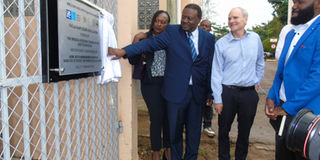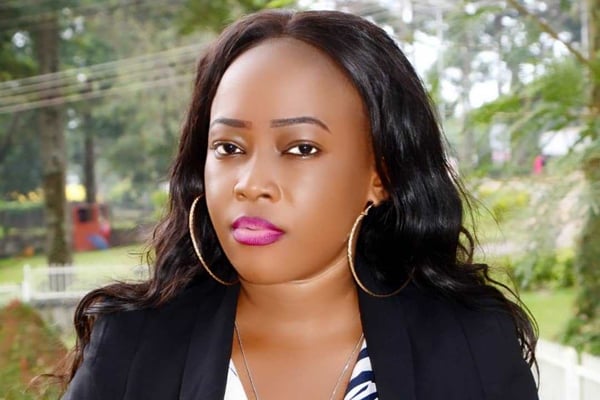UVRI turns to solar to reduce costs

L-R: Ms Elizabeth Kaijuka Okwenje, Prof Pontiano Kaleebu, and Dr Matt Lee unveil the solar hybrid facility at UVRI offices in Entebbe on Tuesday. Photo | Eve Muganga
What you need to know:
- The Shs11 billion solar hybrid facility which was launched Tuesday was built in collaboration with the Medical Research Council (MRC) and the London School of Hygiene and Tropical Medicine (LSHTM)
Uganda Virus Research Institute (UVRI) has turned to solar power as officials seek alternatives to hydroelectricity power which is a bit expensive.
The Shs11.4 billion (2.3 million pounds) solar hybrid facility which was launched Tuesday was built in collaboration with the Medical Research Council (MRC) and the London School of Hygiene and Tropical Medicine (LSHTM).
The Executive Director of UVRI, Prof Pontiano Kaleebu, said the acquisition of a solar hybrid facility would address the challenge of huge electricity tariffs that have been hampering research.
“Electricity bills are some of the costs that make research very expensive. The introduction of solar power contributes to additional clean and affordable energy sources. We use a lot of power, especially due to the machine/equipment and cold chain we need to maintain. We expect a 50 per cent reduction on the grid consumption, which will free up funds for research,’’ he said.
He added that globally, there’s a big move towards using cleaner and renewable energy to preserve the environment.
“The unit is currently implementing ambitious plans to decarbonize its research and operation activities and make them more sustainable. Thanks to the UK Research and Innovation/MRC for funding this project, which has taken two years to be completed,” he said.

Mr Patrick Tukamushaba, the Electrical Maintenance Officer at UVRI explains to Prof Pontiano Kaleebu and Ms Elizabeth Kaijuka Okwenje how the solar will be operating. Photo | Eve Muganga
Ms Elizabeth Kaijuka Okwenje, the Principal Energy Officer who represented the Minister of Energy and Mineral Development, Ms Ruth Nankabirwa Ssentamu, said: “This is a unique opportunity to showcase the transformative potential of solar energy in the field of medical research. The installation of this solar system exemplifies the potential of harnessing renewable energy to advance the nation's sustainable energy efforts.”
She added that the partnership between UVRI and esteemed organizations, such as MRC and LSHTM has been instrumental in driving impactful developments over the past three and a half decades.
Dr Matt Lee, the Chief Operating Officer at LSHTM said: “This solar project can reduce the effect of global warming. Research carried out here is both laboratory and field one, and to run laboratories, huge amounts of power are used, so by using solar power and battery storage you can maintain the facilities throughout the day and night in a sustainable manner.”
Dr Jonas Lexow, the Unit Chief Operating Officer at MRC remarked that the implemented project has been phased in 3 stages to ensure that each phase is financially feasible.
“The solar fractions in the power mix projected after phases I, II, and Ill are 25, 40, and 70 per cent, respectively. Phase I, which involved installation of 1,016 solar panels across the 3 sites, was completed in 2021 followed by phase II in January 2023,” he said.
The solar-powered facility will be used to increase the renewable fraction of power used for scientific research and operations at the institute, lower the electricity bills, guarantee a reliable source of sustainable energy and generate 607kwh of clean energy.





